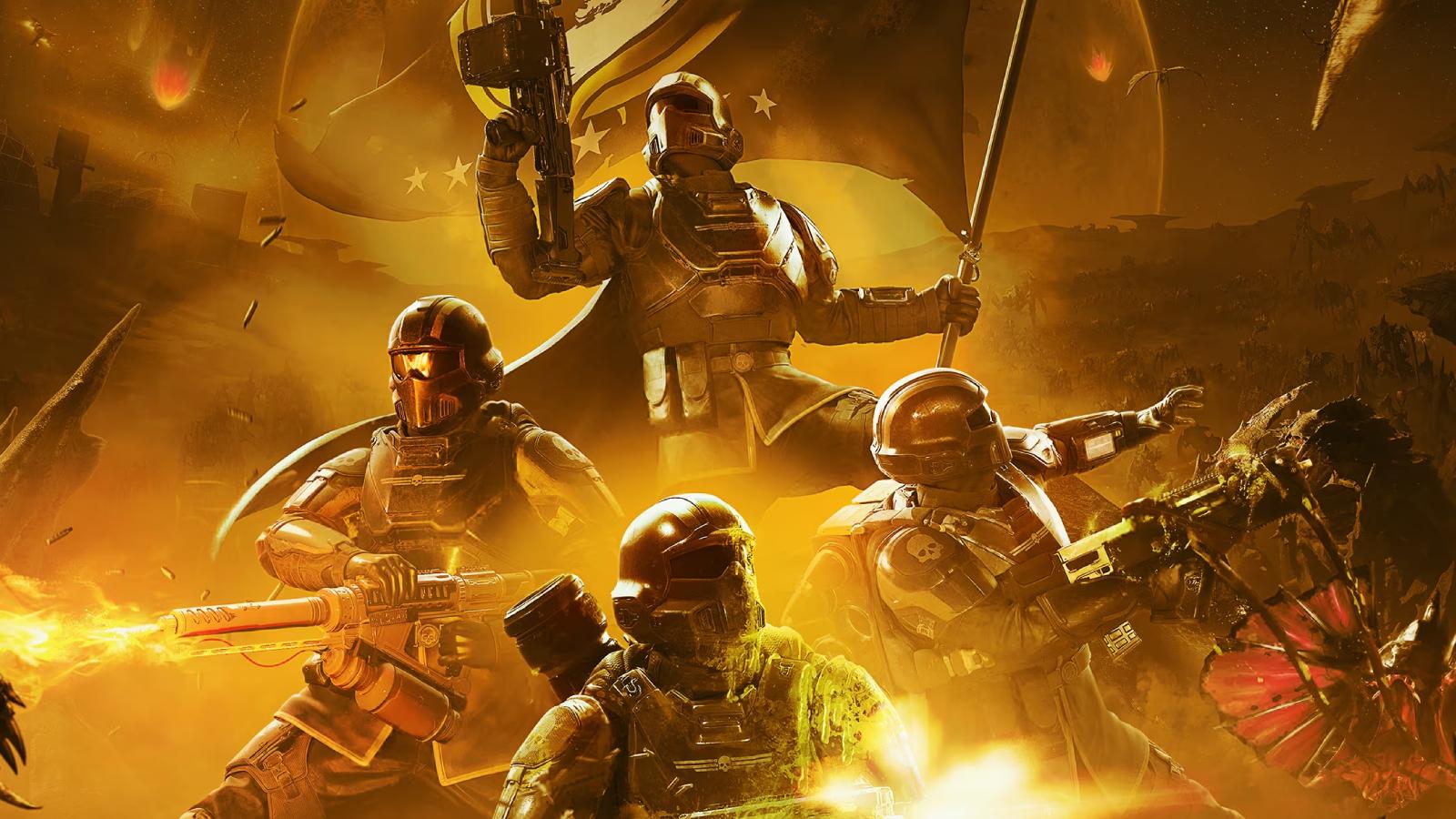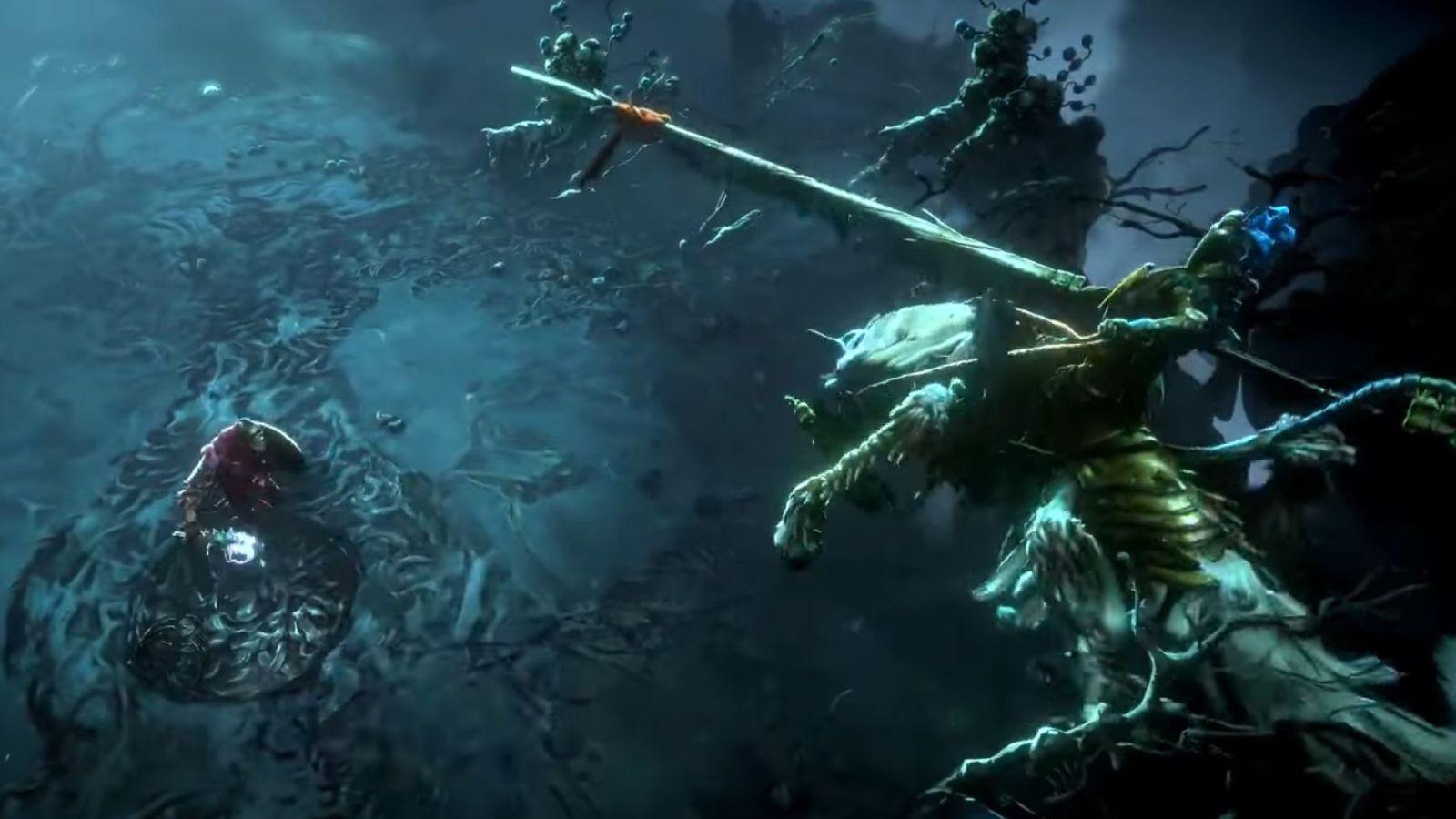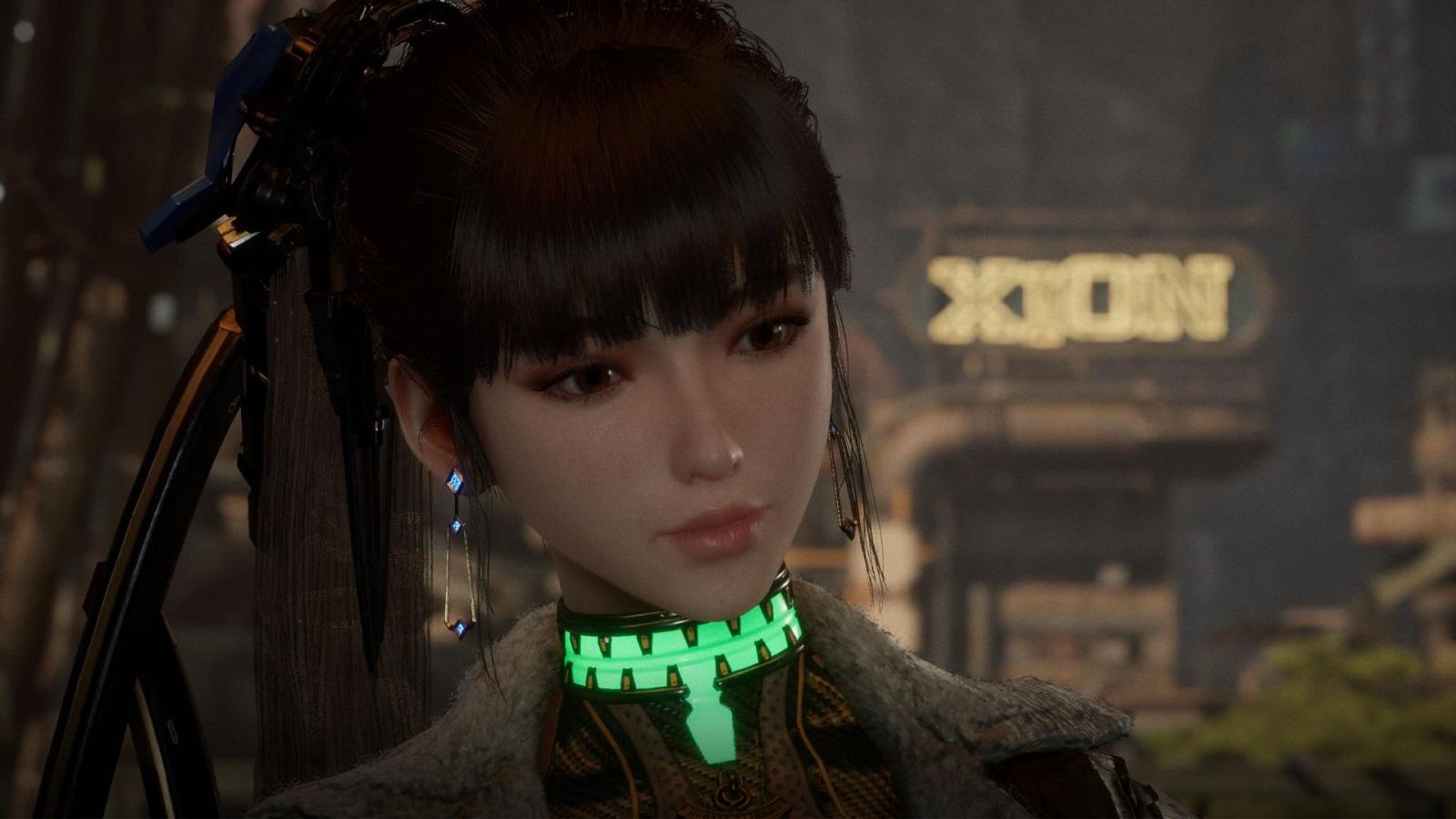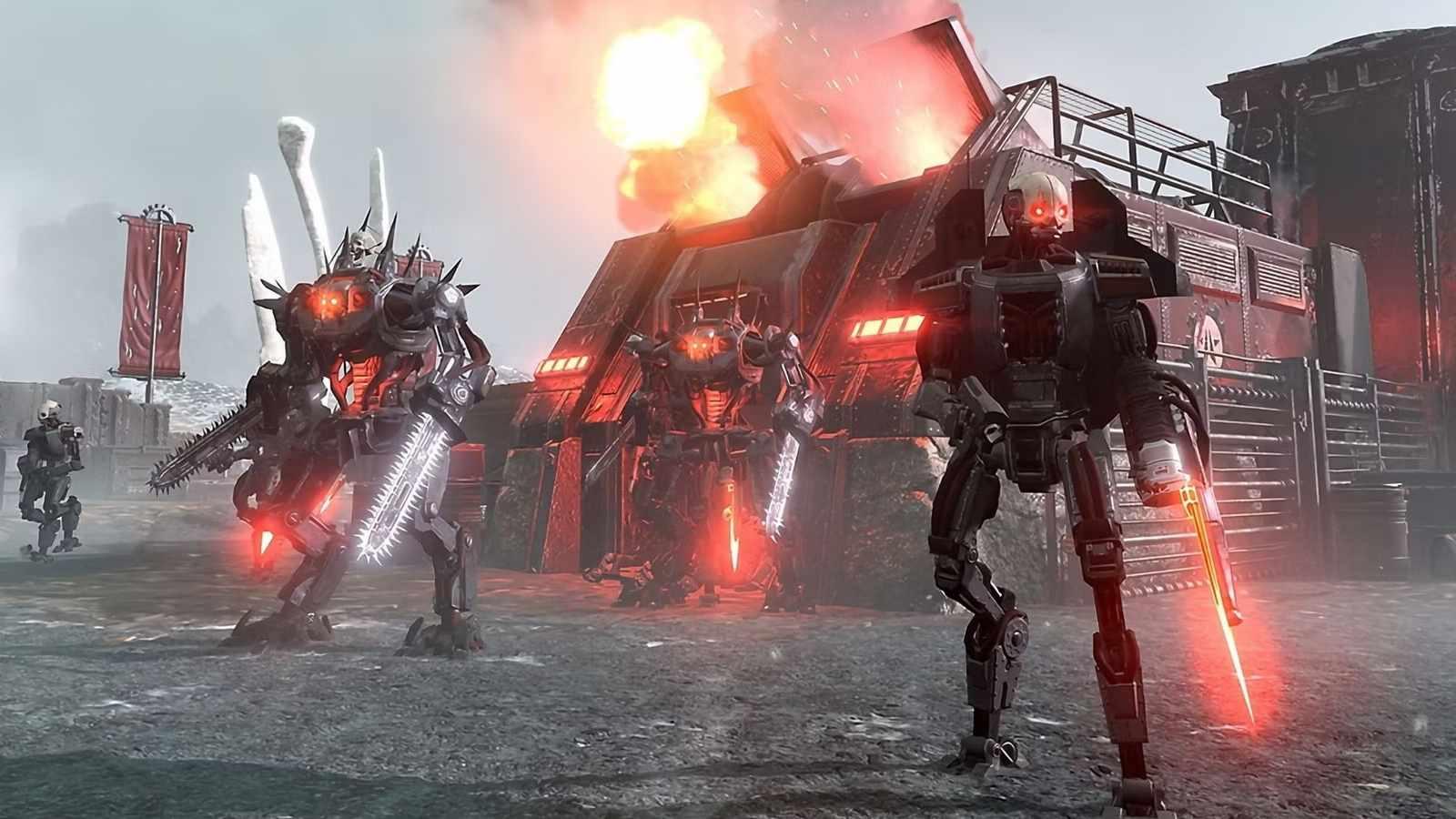Granblue Fantasy: Relink review – Fast action & tropes
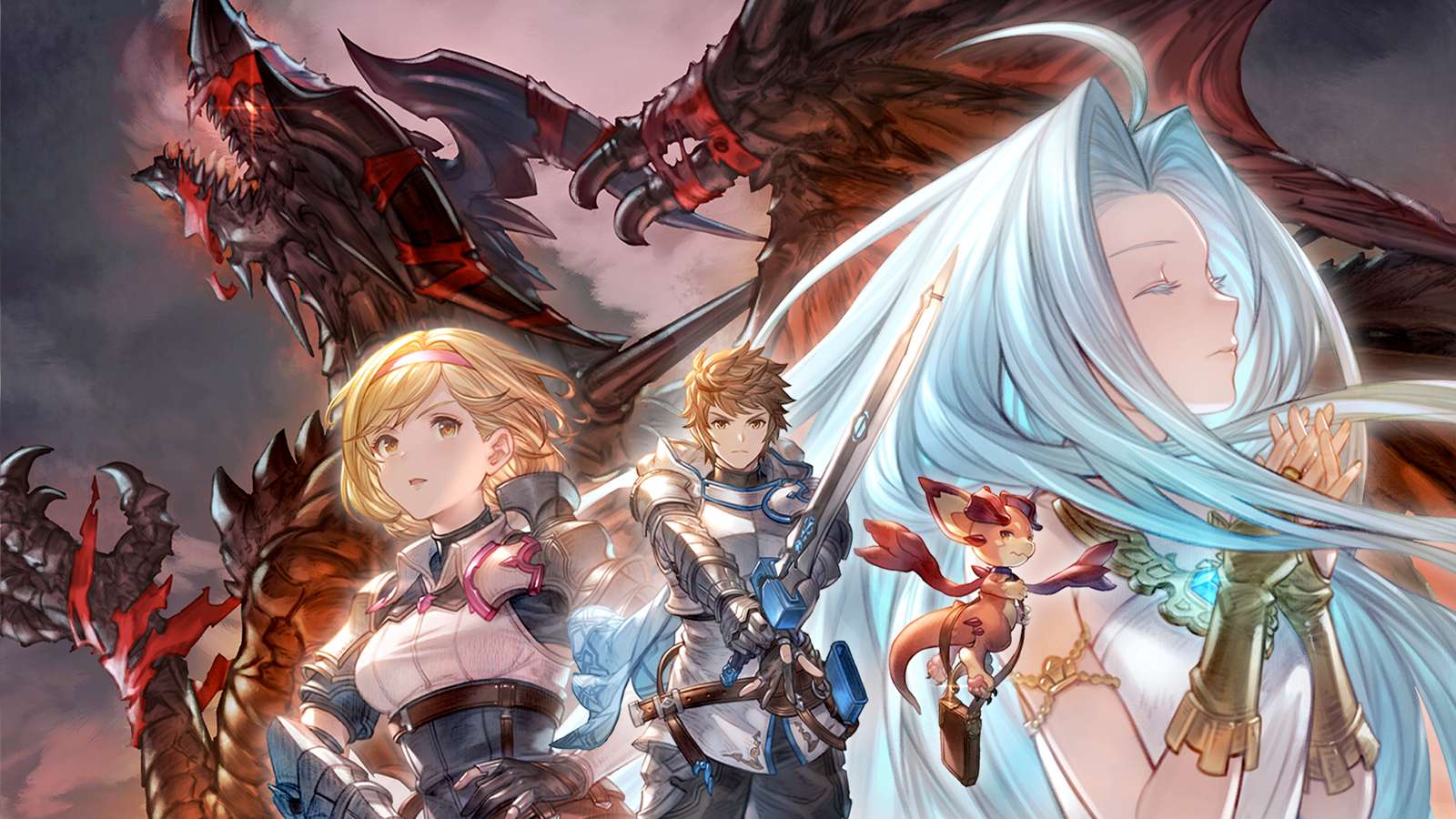
Granblue Fantasy: Relink is Cygames’ first major attempt to bring the long-running gacha game to the prime time.
For about three months in 2018, I spent time with the mobile and browser-only Granblue Fantasy. I never paid close attention to the story and I spent £300 on it in that short space of time, finally deciding to put it away forever. Granblue Fantasy: Relink might have reopened an expensive old wound.
The game has been running since 2014 and is intensely popular in Japan. The country’s love of mobile gachas skyrocketed the game into its own full-fledged property.
Outside of routine, regular updates to the mobile game, it also had its own fighting game which received a significant update in the last few months.
Relink then, is Cygames’ big splash to bring the now-franchise to even more eyes. Bringing the underlying mechanics and concepts of the gacha game to an action RPG does pose some fascinating questions though.
Granblue Fantasy: Relink – Key Details
- Price: $59.99/$99.99 (Deluxe)
- Developer: Cygames
- Release Date: 1 February 2024
- Platforms: PC, PlayStation 4 & 5
Granblue Fantasy: Relink – Trailer
Granblue Fantasy: Relink feels like an anime movie
Relink is perhaps one of the most stereotypical ‘video game’ stories I’ve come across in some time. It hits nearly every single trope that stems from RPGs with roots in Japan and anime.
Mainly, Granblue Fantasy: Relink feels a lot like the movie of a long-running anime. It wastes no time with introducing the expansive cast of characters, instead asking you to catch up with extra learning in your own time.
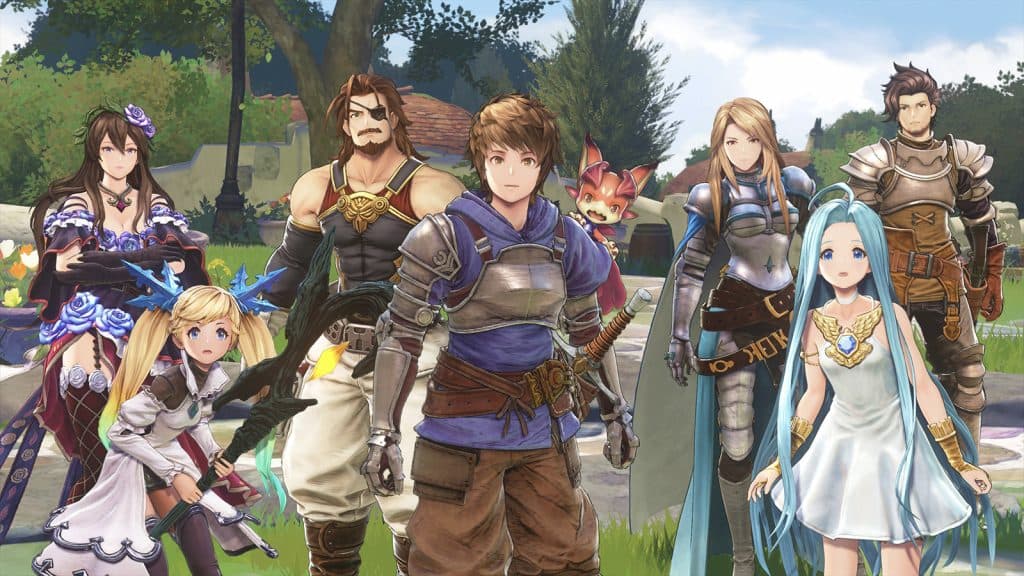
With this, it’s lucky that Granblue Fantasy doesn’t exactly have the richest cast. They don’t display any deeper conceits from the outset, so a lot of characters tend to gravitate toward what I assume is their main trait.
Without the baggage of having to spend a dozen hours getting to know characters, Relink dives straight into it. There’s very little that gets in the way of the rapid thrust through events. It feels like a total blitz of going from a tiny village to much, much larger stakes.
This isn’t the game for explanations, growth, or arcs. The developers knew this, as every text box and conversation you have is accompanied by instant access to a glossary for in-world terms. If you want to find out more about the large roster, there’s an entire section pulled from the Gacha game.
RPG to the right, soap operas to the left
Fate Episodes are deeper dives into the characters, giving you insight into their reasons for joining the group on their adventures.
Granblue Fantasy: Relink is packed with things, but you can see where the corners had to be cut. Each Fate Episode is required viewing, even if you pay no attention, as they grant that character a permanent stat bonus.
However, they’re not fluid cutscenes. Rather they’re a few stills of in-game models in poses as text is read. Some of the stories are genuinely intriguing and it would have been great to see them played out in some capacity.
That said, when you have a couple dozen characters to sift through, I can understand why these are done with the minimum effort.
Fate Episodes hide more than you think
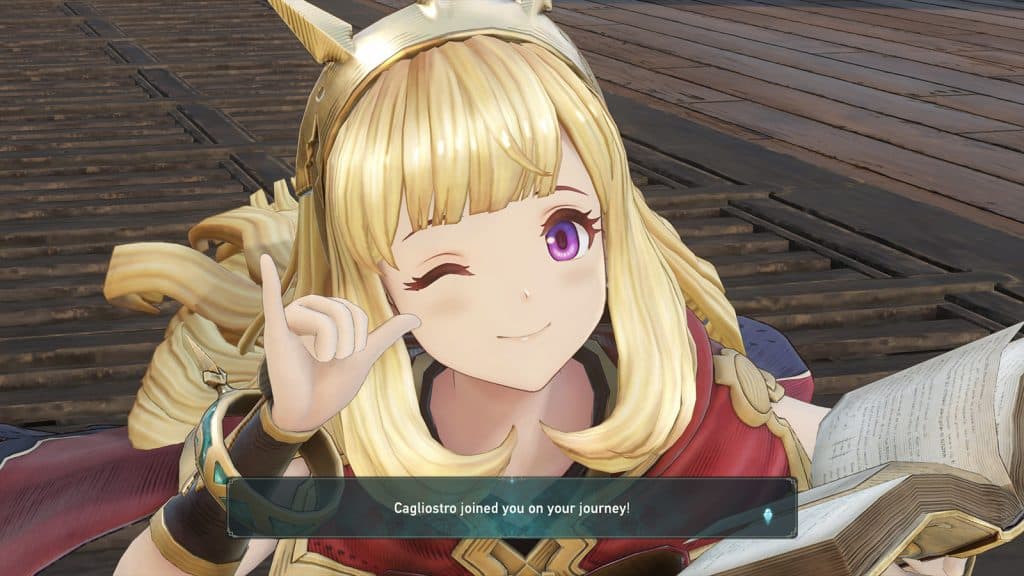
An unlockable character, Cagliostro, is the creator of alchemy, transferring her mind into a handmade body. It brings a crucial dark undertone to the character, but Relink just doesn’t make any attempt to interweave this into the game itself, instead opting to keep it separate.
It does make them a little bit of a chore to marathon through after unlocking other characters or progressing further into the game and forgetting to catch up on the soap operas.
For the main story, the game hits all the anime movie tropes as well. There are even three henchmen you’ll encounter and a bigger, overall villain who has evil machinations to do with giant, screen-filling creatures.
It never strays outside of that safe zone, but it feels like a familiar blanket. It does it all in earnest too, so I could never fault it for its tempered ambitions. Granblue Fantasy: Relink never blinks in the face of not rocking the boat, and for that I respect it.
The game eventually began to grab hold of my brain though, but it wasn’t the story that did it. Granblue Fantasy: Relink has me hostage with its structure.
Granblue treads familiar Monster Hunter territory
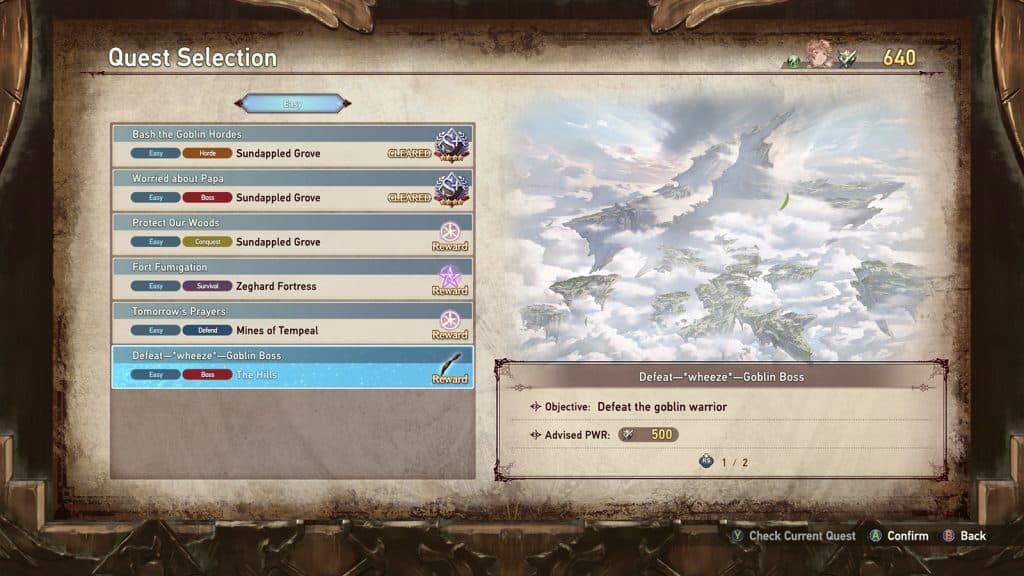
There’s no denying Granblue Fantasy: Relink’s influences for structure. Phantasy Star Online, Monster Hunter, God Eater Burst – it’s all there.
Between the story, you’ll head back into town and enter some quests. The speed you complete these puts them closer to something like Phantasy Star, but there are some repeatable boss fights later that have massive Monster Hunter energy.
As the game relies on a weakness system, you’ll be altering your party around different requirements. However, there’s no sense in trying to min-max these while completing the story if you’re playing solo.
The playable character can’t be removed from the party until after the main quest is over. This can seriously hinder some quests too. They are Wind type, and heading into a quest with an enemy expressly designed to counteract Wind elements can scupper chances of success. It didn’t become irritating until the last stretch of the main quest, where they began to need reviving if I wasn’t directly playing as them.
Never too hard
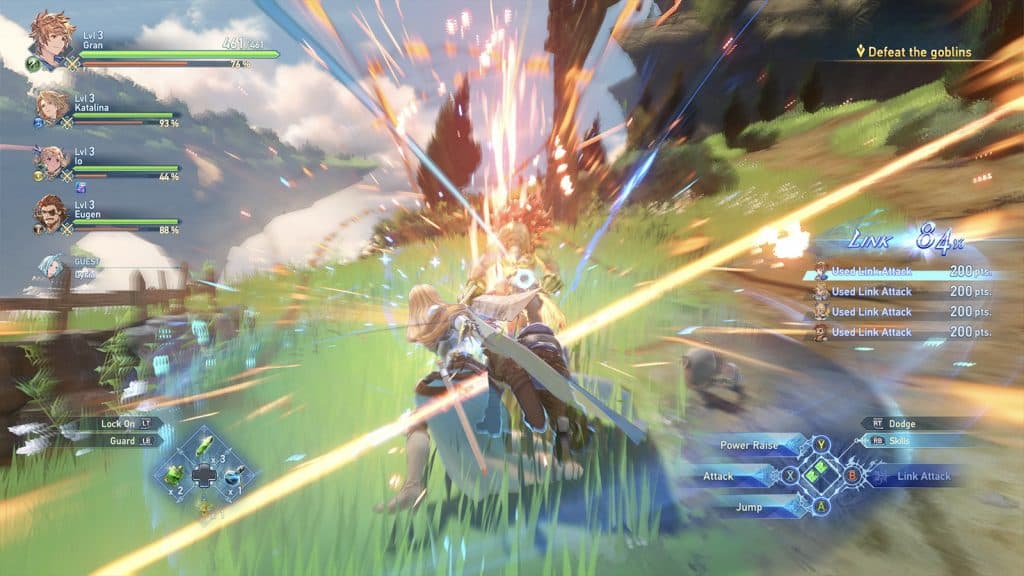
The game isn’t lax on difficulty – you will need to learn boss fights for instance – but it’s not a particularly difficult game. Relink gives you a ton of opportunities for healing and reviving, and getting downed is often an inconvenience rather than quest-ruining.
You’ll enter a ‘critical’ state, which the whole team shares a meter for. Once it depletes, it’s game over, but I only saw this twice. The majority of the defeats weren’t actual game overs, but due to time limitations some bosses have. On top, there’s also missing out on the extras from quests.
While you’re doing the main objective, three checkboxes will haunt you while you do battle. These could be killing a particular number of enemies, beating them in a certain time frame etc. In the early stages, you might beat one or two, and then swing back to decimate at a higher level.
But it’s irritating missing that one thing – being two seconds from beating it in record time to score higher on the results screen. You get rated from C to S++, and in traditional fashion, the higher your score, the better the rewards.
This can weigh on the minds of completionists, especially when it’s incredibly easy to repeat quests by hitting a button on the results screen. This, however, ties into the more recognizable traits from the Gacha game.
Grind mindset
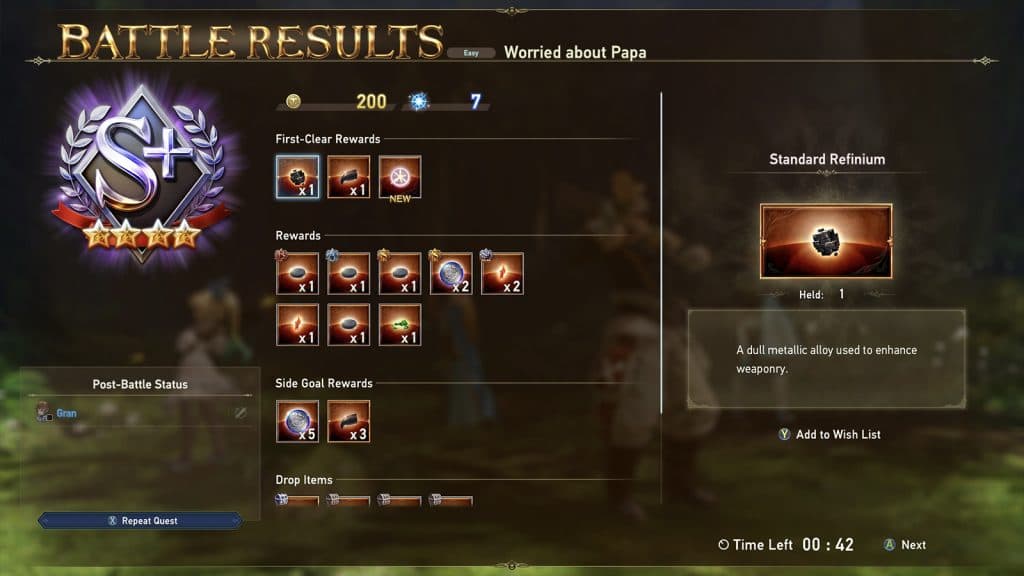
One thing brought over from the mobile game to Relink is the endless grind. Weapons, items, and characters, all need leveling up and upgrading.
When the game starts out, you’ll only be required to find a couple of items. Further in, you’ll be getting orbs, shards, and bits of creatures. All these come from the game’s main loop it manages to weave pretty well into the main story.
Not that it makes sense in the story that the crew spent three hours questing across the globe while the plot took a huge pause. However, the moment-to-moment gameplay is so chaotic, that it’s hard to hate that it encourages you to take a break from barrelling through its story.
You can return to town at any moment you like to level up and jump back in from the last checkpoint. Usually, I found myself doing this while facing some later-game bosses that began introducing insta-kill moves you have to stop before a timer runs out.
It also means that you’re not trapped in the story if you want to suddenly hop into an online quest with friends.
Granblue Fantasy: Relink offers chaotic fast-paced fights
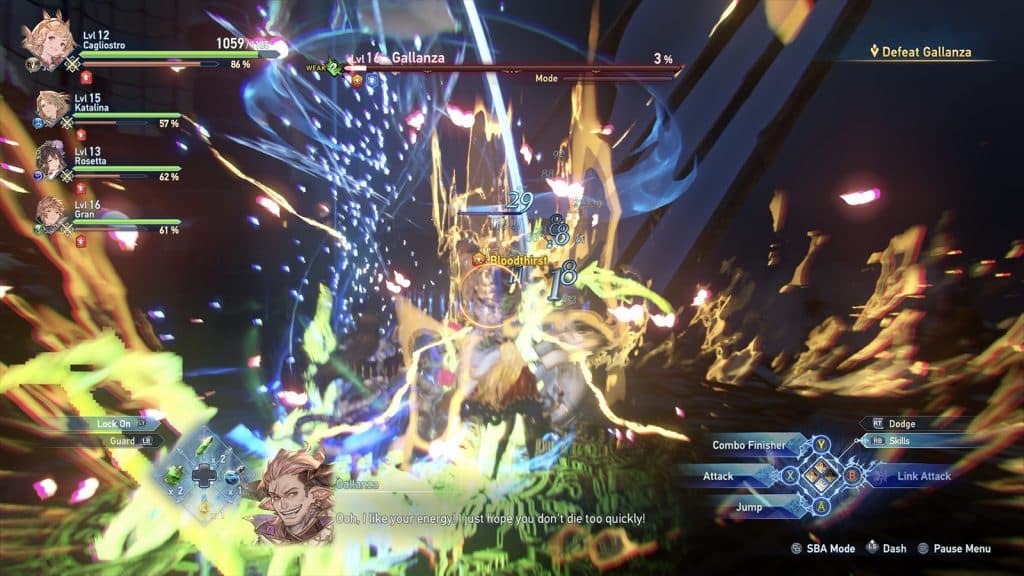
That structure is fine and all, but what about the game itself? Well, the moment-to-moment is thrilling. It’s a basic X-Y masher, with some element of strategy stemming from your party rather than actual input.
I found that the explosive action and almost sprint-like pace of fights made some of it really hard to read at times. It becomes a mess of numbers, particle effects and button prompts all too quickly without ever easing the player in. Sure, you start with weak enemies, but this quickly spirals into madness.
Thankfully, during some of the more screen-filling boss fights, the constant reminders of where they’ll strike with marks on the ground are a rubber dinghy in a sea of confusion.
I have the power of anime and friendship on my side
The theme of friends and teamwork doesn’t simply stop at the story. You’ll be able to execute “Link Attacks” with B (or Circle) when beating down the same enemy as a companion. This builds up the Link meter, which when you all execute a Link Attack at 100% together, introduces slow motion and bigger damage.
A large part of the game is cooperation, which I lost in playing the game mostly solo. Any attempt to organize or join a multiplayer game during the review process never really worked out.
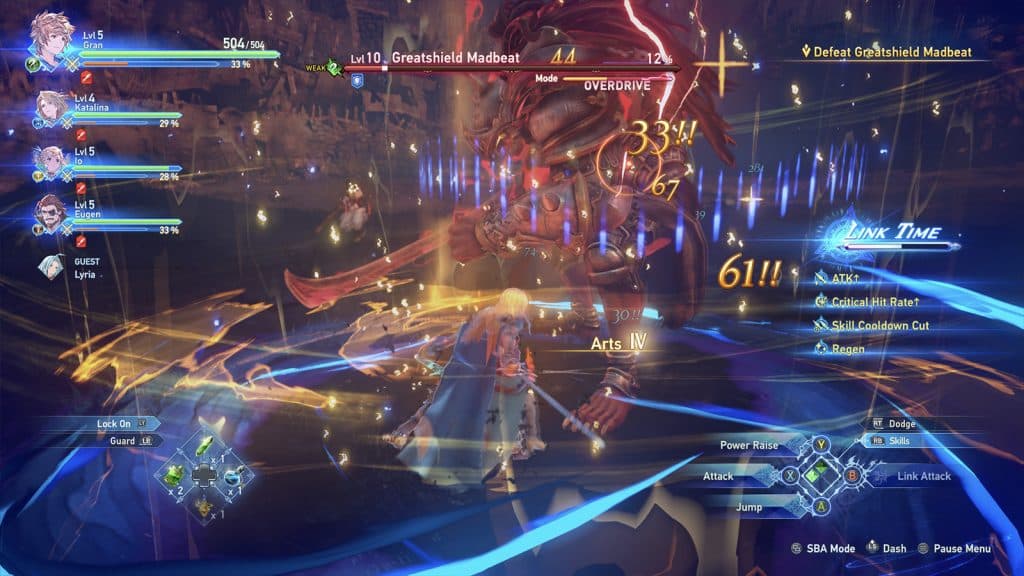
Coordination of Link Attacks, special moves and the like will surely shine through once you can matchmake with randoms online – right?
However, the computer-controlled characters never really hindered the experience, with some moments where I’m sure they have invincibility turned on for large-scale, heavy attacks from bosses.
There’s limited control over the CPU, which is fine for the most part. You can tell them to hold onto or use their super moves. That’s about it though. No squad mechanics here, they’re bashing their invisible X buttons too.
Big roster allows Relink to switch it up
While sometimes it can feel a little basic, with a lot of the characters’ key moves boiling down to mashing X and Y, it’s only because of how quickly it shows its hand.
There’s a roster of 20 characters, with six unlocked from the start. Despite the methods being relatively the same for actually pressing on, each character does play in a fairly unique way.
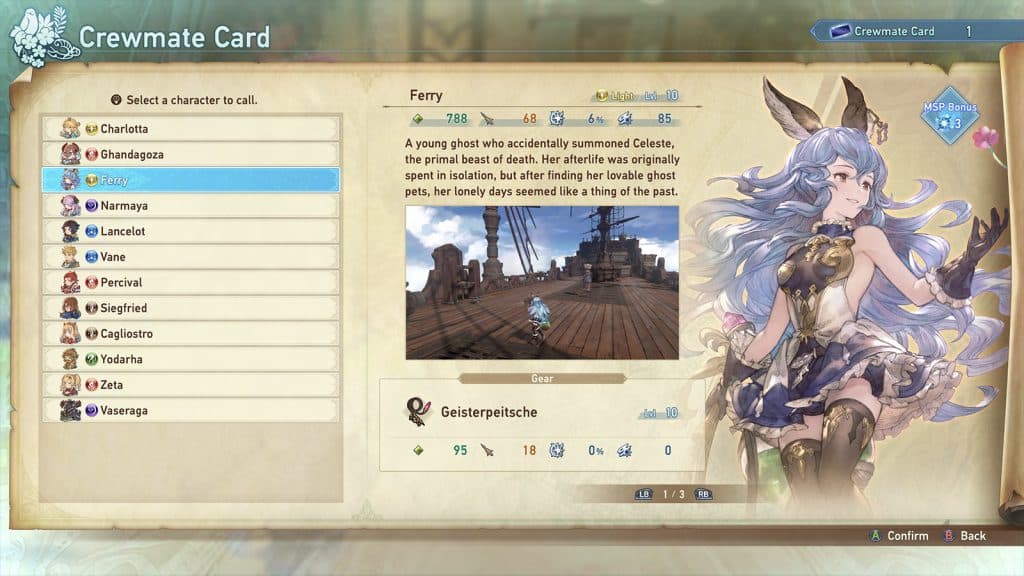
For instance, Katalina might seem like an ice-themed knight but she eventually develops into a key player for slowing enemies down by freezing them rather than dealing damage. The main character morphed into my healer, while another unlockable character quickly became my damage dealer.
Some characters, like Eugen, even feature entirely different ways to play. By holding down the attack button, you’ll enter a third-person shooter view to ‘snipe’ enemies. Another gun-toting character, Rackam, doesn’t feature that, instead acting more like covering fire for the crew.
At every juncture that Relink could get boring, it pulls itself back from the brink by offering different ways to play similar missions and quests.
It’s a shame that unlocking these characters takes an age. You earn character tickets, which are locked either behind regular intervals in the story or certain quests. I guess it could be worse, and the full gacha randomness could have followed Relink, but it feels like this should be one of the faster elements of the game.
Upgrading these characters also means repeating quests to earn points, which can be plopped into skill trees. For an idea of how large these skill trees are, after beating the main story, my main character sat around 30-35% complete in one of three trees. Attack, Defence, and Collection – which pertain to your weapon – all offer different moves on top of passive buffs to attack or HP.
Stuffed with things to do
Think we’re done? Well, once you do beat the main story, you unlock even more to do. It’s yet another one of those games to which you can apply the oft-touted meme “the real game starts now”.
A major problem with this overstuffing is that incredibly useful elements can go amiss. I suspected the inventory was there just for traditional purposes. Later into the game though, I found I’d been picking up “spellbooks” which can give a huge amount of XP to characters you’ve been ignoring.
Or that there are boxes that need to be appraised, which you only find out after seeing the credits. You’ll routinely see “trophy unlocked” during the main portions of the game. These give you bonus items, but it’ll never tell you that until you go into that menu.
Granblue Fantasy: Relink is not without stuff to do, but it’s overpacked to a fault at times. Side quests, for instance, are merely a means to an end, with no stories to invest in. The characters themselves, having been explored for nearly a decade on phones, are left to the side as well.
Some of the quests you go on feel like obligations, rather than interesting designs. Kill waves of enemies, but in the desert, rather than a forest.
Granblue Fantasy: Relink PC version is fine on Steam Deck too
It helps that Relink looks fantastic. I played on PC and Steam Deck, with the game offering excellent performance on the Framework 16 (RX7700S and Ryzen 9 7940HS), while on Steam Deck you’re limited to 30FPS to 40FPS for best performance. The game doesn’t support 16:10 aspect ratios though, so you will be met with large black bars on top and bottom on widescreens.
The PC version also doesn’t feature nearly enough settings for personal tweaks, instead offering presets for most options. However, as the game is designed with a PS4 in mind too, you shouldn’t find it hard to run it smoothly.
Go in as deep as you like
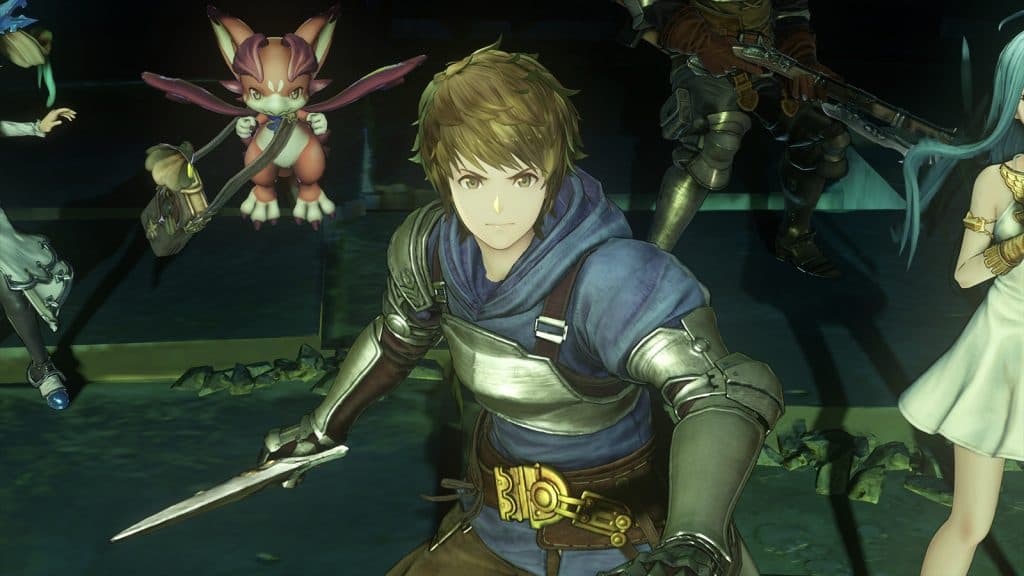
Granblue Fantasy: Relink is perhaps a little better than its counterparts in the genre. The game never forces you down the path of perfecting it and pushing you into the meta. I’m sure Cygames would love for you to stick around for hundreds of hours, but the fact of the matter is, it’s entirely optional. The game’s core loop can be fracked for as much or little as you like. You could learn the game’s mechanics and attempt bosses entirely solo, or just relax through a fairly cozy video game with some low stakes.
Verdict – 4/5
While the story elements of the game can feel a little wishy-washy, Granblue Fantasy: Relink itself is overstuffed with things to do. However, it is a rousing success at bringing the franchise to yet another genre – even if it’s adjacent this time.
The big roster of characters is relatively easy to adjust to, and the moment-to-moment feels superb despite its hectic nature. It utilizes the Monster Hunter-esque structure to its advantage as well, offering a trove of quests to work through.
It does fall into some of the series’ most known problems – namely grind – but it never feels like it outstays its welcome.
If you click on a product link on this page we may earn a small affiliate commission.
